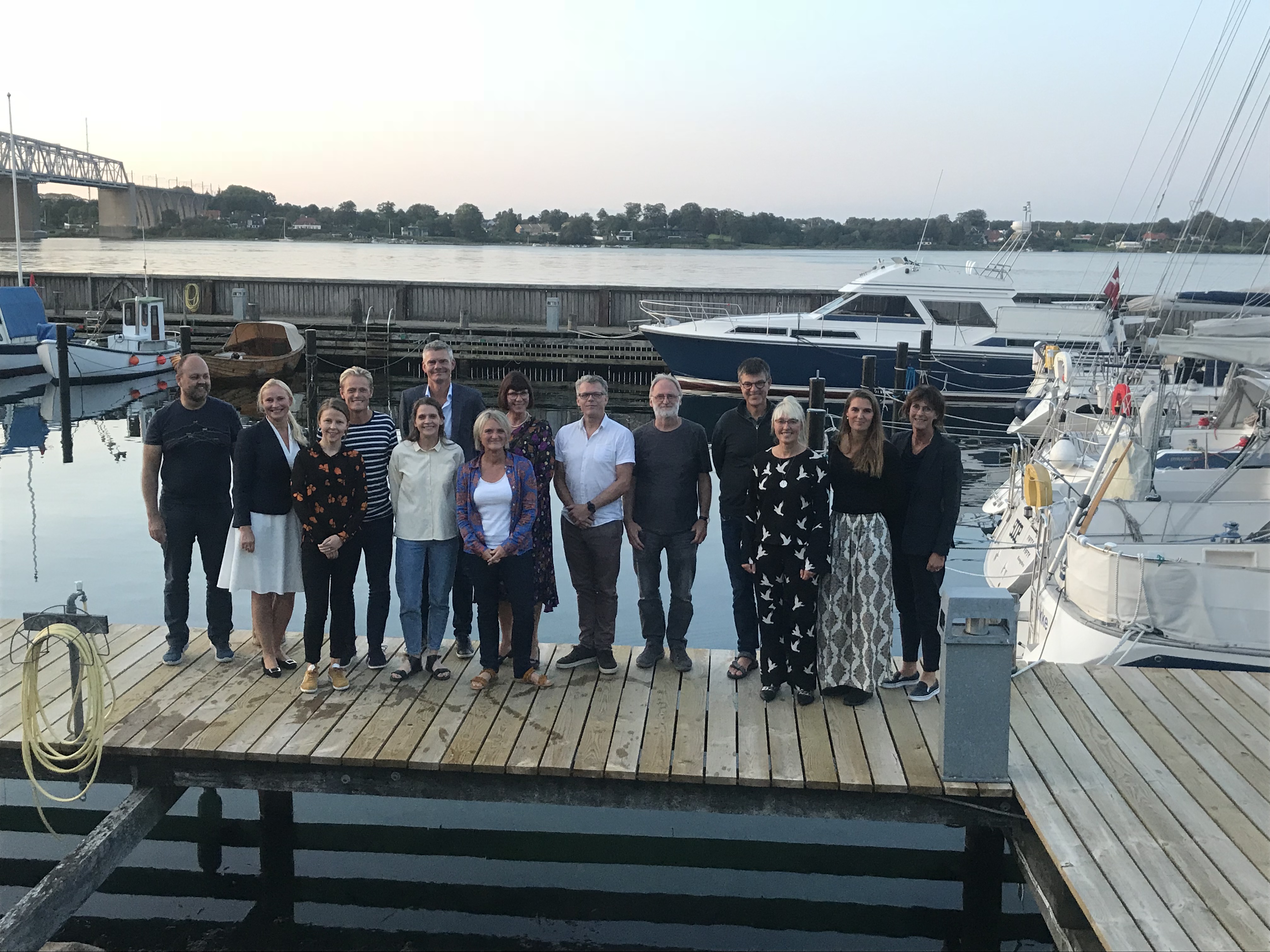The multi-disciplinary Research Centre on Living with Dementia (LIDEM), University of Southern Denmark
In Denmark it is estimated that 89,000 people suffer from dementia to various degrees6. Dementia is a brain disease which causes cognitive impairments. The most frequent form of dementia is Alzheimer's disease (50,000). Other common dementia diseases are Lewy Body and vascular dementia. Some diseases such as diabetes can contribute to an increased risk of developing dementia7. Most often dementia affects persons above the age of 65, but the disease can also have an earlier onset. It is estimated that nearly 3,000 younger Danes have a dementia diagnosis8. It is expected that the number of persons with dementia will increase as life expectancy increases. It is anticipated that in the year 2040 the number of persons older than 60 years of age suffering from dementia will be rough 150.0009. Furthermore, it is estimated that the direct health- and social cost connected to dementia in Denmark is 10 billons DKK/year10.
Based on the Dementia Action Plan 2025 “A Safe and Worthy Life with Dementia”, the focus of which is to increase knowledge and competences in the area, the intention of the research centre is to perform research on the lived life with dementia (Living with Dementia).
The aim of the research centre is to increase knowledge and evidence in the area, by focusing on the everyday life with dementia from the perspective of people affected by the disease to develop initiatives that remedy their consequences of the disease. The research centre seeks to learn from the persons suffering from dementia, their relatives, and the professionals how life with dementia is experienced and which factors increase the quality of everyday life.
LIDEM is constructed of four coherent perspectives with embedded CS-research:
- Everyday life in urban and rural areas, living conditions and living forms
- ReCreational social activities
- The challenges for persons and relatives living with dementia, from relating to diagnosis and beyond
- Dementia and the role of technology
The background for the establishment of the research centre is due to the acknowledgement of dementia being a disease which affects a lot of people, both the person suffering from dementia, their relatives and the relatives to the relatives, as well as the professionals. That is why the focal point and the innovativeness of this research centre is to follow and learn from the lived life with dementia. LIDEM seeks to do research ensuring that people can stay in their own home for as long as possible and uphold a safe and dignified life. Furthermore, the centre seeks to investigate how to ensure that the activities and initiatives offed to the persons living with dementia are meaningful, work as intended and provide purpose in life. In other words, the centre wants to clarify how best to create a dementia friendly community.
The perspective of Citizen Science provides an overall and innovative framework for the work of the research centre. The research is based on active citizen involvement in planning, completion and implementation of the activities of the research centre. Citizen involvement means that citizens with dementia, their relatives, different professionals, local areas, patient associations and other stakeholders are involved in developing the specific core perspectives and research areas and further contribute with important adjustments and recommendations. By using a citizen science perspective, it is expected that the active citizen involvement will bring an essential influence on the social and societal impact of the research centre.
Even though living with dementia represents a specific area this centre will contribute with useful knowledge on life with a chronic disease and the challenges that are experienced in the everyday life and in the healthcare system in general. Furthermore, this research centre is related to the third UN Global Goal which concerns health and wellbeing for all and in a Danish context focuses on quality of life for persons living with a chronic disease.
In an international context the research centre consists of a unique multi-disciplinary consortium with participation of leading scientist and experts with strong and diverse scientific competencies from across 4 faculties (HUM, NAT, SAMF, SUND) at the University of Southern Denmark who are distributed at 8 departments. Furthermore, leading scientists from University Colleges (UCL) are represented and several Danish municipalities have given a positive feedback and showed great interest in participating in the work of the research centre. The research centre is furthermore supported by an international board of experts from Sweden, United Kingdom, USA, Belgium and The Netherlands. The centre is an important venture for SDU and to develop the idea behind the research centre construction it has received funds from the executive board of SDU.
 The consortium, august 2019
The consortium, august 2019
Links
[1] Nationalt Videnscenter for Demens. Tal og statistik om demens. 2019. Senest opdateret: 14. juni 2019. Adgang via:
http://www.videnscenterfordemens.dk/statistik/
[2] Jørgsen, K. Sukkersyge fordobler risikoen for demens. 2011. Senest opdateret 29. september 2011. Adgang via: http://www.videnscenterfordemens.dk/forskning/forskningsnyheder/2011/09/sukkersyge-fordobler-risiko-for-demens
[3] Sundheds- og Ældreministeriet. Et trygt og værdigt liv med demens, National demenshandlingsplan 2025. 2017. Adgang via: https://sum.dk/Aktuelt/Publikationer/~/media/Filer%20-%20Publikationer_i_pdf/2017/Demenshandlingsplan-2025-Et-trygt-og-vaerdigt-liv-med-demens/Demenshandlingsplan-2025-Et-trygt-og-vaerdigt-liv-med-demens.ashx
[4] Jørgensen, K. Ny prognose for antal af demensramte i Danmark. 2014. Senest opdateret 18. marts 2014. Adgang via: http://www.vidensenterfordemens.dk/nyheder/2014/03/ny-prognose-for-antal-demensramte-i-danmark/
[5] Nationalt Videnscenter for Demens. Omkostninger forbundet med demens. 2018. Senest opdateret 31. august 2018. Adgang via:
http://www.videnscenterfordemens.dk/statistik/omkostninger-forbundet-med-demens/
[6] Nationalt Videnscenter for Demens. Tal og statistik om demens. 2019. Senest opdateret: 14. juni 2019. Adgang via:
http://www.videnscenterfordemens.dk/statistik/
[7] Jørgsen, K. Sukkersyge fordobler risikoen for demens. 2011. Senest opdateret 29. september 2011. Adgang via: http://www.videnscenterfordemens.dk/forskning/forskningsnyheder/2011/09/sukkersyge-fordobler-risiko-for-demens
[8] Sundheds- og Ældreministeriet. Et trygt og værdigt liv med demens, National demenshandlingsplan 2025. 2017. Adgang via: https://sum.dk/Aktuelt/Publikationer/~/media/Filer%20-%20Publikationer_i_pdf/2017/Demenshandlingsplan-2025-Et-trygt-og-vaerdigt-liv-med-demens/Demenshandlingsplan-2025-Et-trygt-og-vaerdigt-liv-med-demens.ashx
[9] Jørgensen, K. Ny prognose for antal af demensramte i Danmark. 2014. Senest opdateret 18. marts 2014. Adgang via: http://www.videnscenterfordemens.dk/nyheder/2014/03/ny-prognose-for-antal-demensramte-i-danmark/
[10] Nationalt Videnscenter for Demens. Omkostninger forbundet med demens. 2018. Senest opdateret 31. august 2018. Adgang via: http://www.videnscenterfordemens.dk/statistik/omkostninger-forbundet-med-demens/